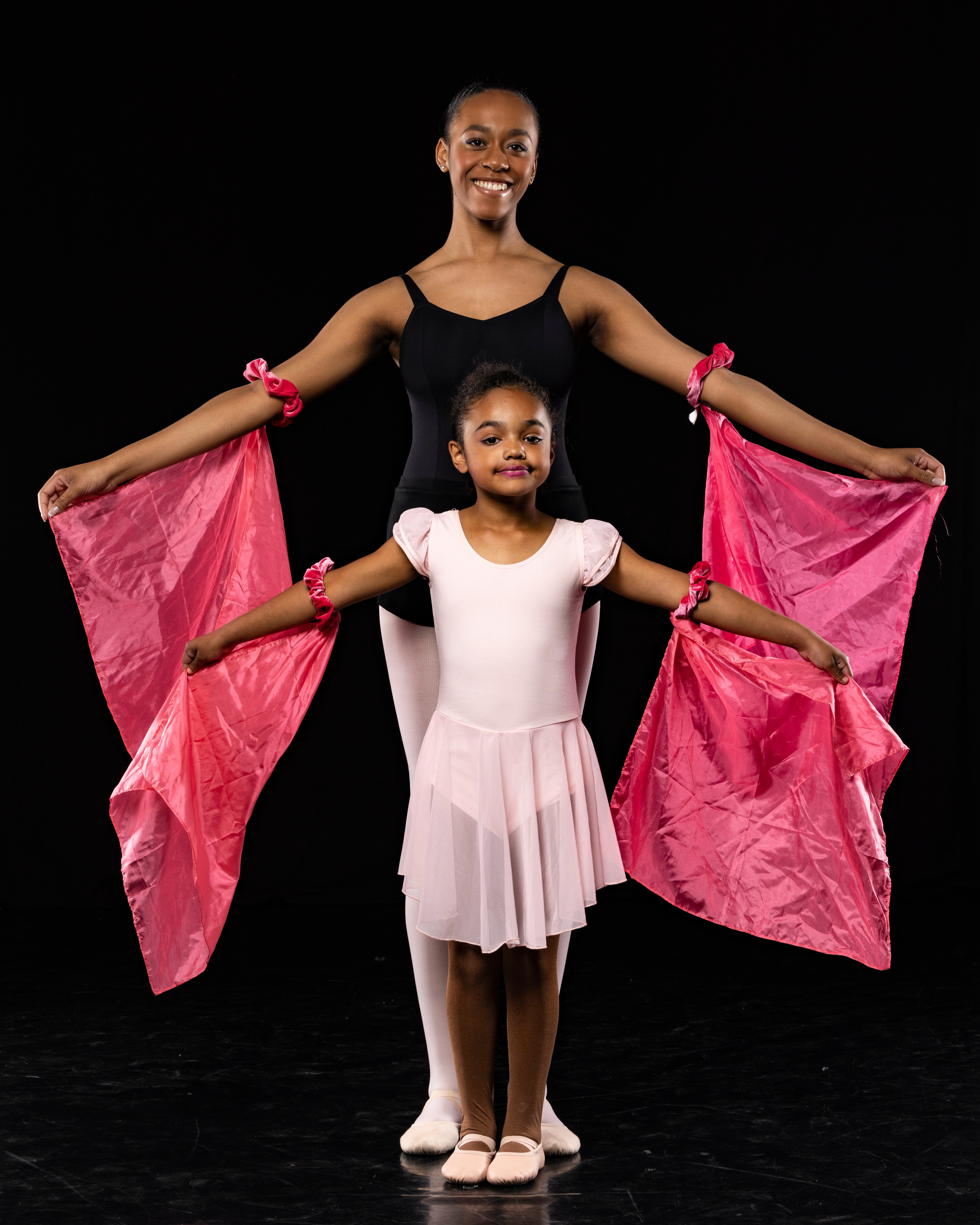Inspiring Abilities: Movement Mentor Program

For one mother whose daughter has cerebral palsy, the vision of ballet classes and performing on stage was merely a dream until she discovered Ballet West’s Movement Mentor Program where her young girl spent eight months attending a weekly ballet class with individualized mentoring from advanced Frederick Quinney Lawson Ballet West Academy students.
“Watching their final performance, this mother cried because she never thought her daughter would have this opportunity,” said Heather Fryxell, who created the program over 20 years ago when she wanted to provide an opportunity for children with disabilities to dance.
“As a former dancer myself, it can get overwhelming, so I wanted to reach out and do something outside of myself,” said Fryxell. “I wanted to provide these students with a chance to dance and have peer interaction. My goal has been to offer the classes free of charge for participants, because these families already have a lot of financial obligations for their children.”
Movement Mentor is a unique program that pairs advanced students of the Ballet West Academy with students who have disabilities for weekly dance classes at Ballet West campuses. The mentors and students pair up for the entire year and perform together in the year-end concerts. The class is taught by Ballet West adaptive dance instructors with professional ballet experience, and the students receive one-on-one as-needed guidance from their peer mentors that create bonds of friendship, trust, and learning.
“I believe in the philosophy that everyone can dance,” said Director of Education and Community Outreach Peter Christie, who brought the program to Ballet West in 2015. “Ballet as an art form has traditionally had a reputation of elitism for a certain class of people, with a certain look and style, but there is so much happening in the world to break down those stereotypes of who belongs where and allowing people to explore other possibilities, which is something we’re also trying to expand upon.”
Fryxell said the program is not found often in professional ballet schools, where students commit to volunteering in the program for the entire school year. “It’s a win-win because students get peer interaction but also learn valuable teaching skills by learning how to think outside the box,” said Fryxell.
Audrey Dodd, who now runs the program, adds that “mentors also gain a greater understanding of how different bodies move and different ways to be creative that are not strictly ballet that will open their understanding of dance.”
The class opens with exercise to promote socialization and connection, then moves to warm-ups and stretches that focus on sensory awareness and the mind/body connection. The rest of class explores basic ballet steps at the barre, promoting strengthening and building on exercises to help with balance and coordination during floor exercises.
“We prioritize establishing a safe environment for all the dancers to explore their own creativity,” said Dodd. At the end of the school year, the program culminates in a final performance onstage.
“It’s one of my favorite moments every single time, like putting a beating heart onstage, because it’s the essence of what humanity gets from movement to music and goes beyond the barrier of physicality of the human being,” said Ballet West Academy Director Evelyn Cisneros-Legate. “We see our Academy students, who are technically proficient, give their commitment, tenderness, and care to a child who will never be able to do what they do. It makes me cry every time. Humans were made to move and to dance to music. This program is so special and unique, taking Ballet West to a whole other level.”
One new student this year has a medical condition that makes it difficult and painful to stand unsupported. With his walker and mentor beside him, he concentrated on the teacher’s movements and intently replicated the movements.
He is the most beautiful dancer with a natural ability that is just breathtaking,” said Dodd. “We don’t know how his health situation is going to play out, but he needs to have this opportunity, to express what is inside of him. That’s what this program is all about.”